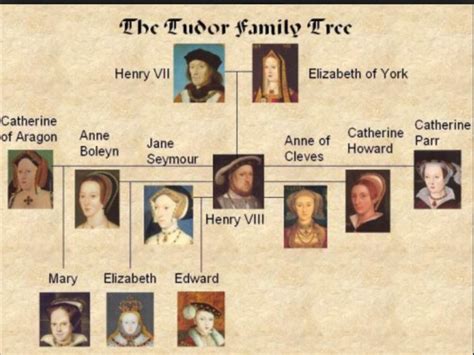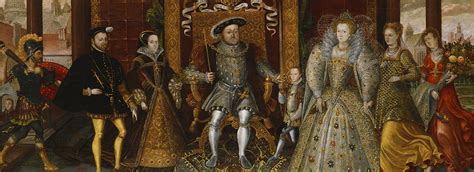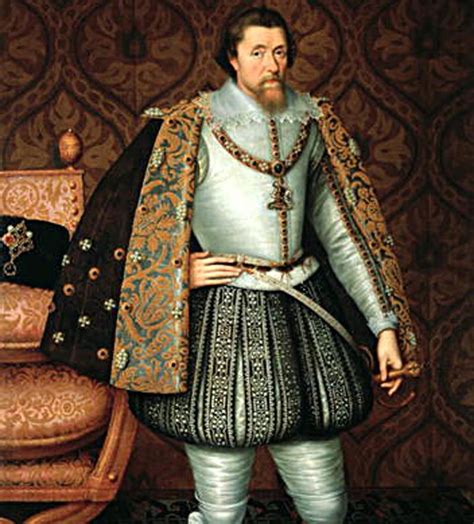inghilterra nobili stuart e tudor | tudor and stuart england inghilterra nobili stuart e tudor This article seeks to cross the historiographic divides between chronological boundaries, between Tudor and Stuart, insular and global, using 1603–1625 as a case study. Louis Vuitton’s “Fleur de Désert” perfume, priced at €320 EUR (approximately $326 USD) for a 100ml bottle and €495 EUR (approximately $504 USD) for 200ml, is now available in stores. Louis Vuitton Perfumes Fragrances. Louis Vuitton's Latest Perfume Highlights Native Middle Eastern Flowers: Meet the scent dubbed "Fleur du .
0 · who ruled the tudor kingdom
1 · tudor and stuart time period
2 · tudor and stuart in the wider world
3 · tudor and stuart england 1607
4 · tudor and stuart england
5 · tudor and stuart british colonies
6 · tudor and stuart britannia
7 · tudor and stuart atlantic
Trīs Lietuvā bāzēti uzņēmumi ieņem Baltijas TOP 30 vērtīgāko uzņēmumu augšgalu Skatīt vairāk TOP101 2023. gada Latvijas Uzņēmumu Aplēse: Starp Krīzi un Iespējām | Kārlis Krastiņš
Appunto di storia sull'Inghilterra dopo la guerra delle due rose, la società di quel periodo e vari avvenimenti.The House of Tudor was an English and Welsh dynasty that held the throne of England from 1485 to 1603. They descended from the Tudors of Penmynydd, a Welsh noble family, and Catherine of Valois. The Tudor monarchs ruled the Kingdom of England and the Lordship of Ireland (later the Kingdom of Ireland) for 118 years with five monarchs: Henry VII, Henry VIII, Edward VI, Mary I and Elizabeth I Presents a detailed overview of Tudor and early Stuart expansion, highlighting the twin roles of trade and settlement in helping to establish the early overseas empire. Contains .This article seeks to cross the historiographic divides between chronological boundaries, between Tudor and Stuart, insular and global, using 1603–1625 as a case study.
The House of Tudor, reigning from 1485 to 1603, stands as one of the most significant dynasties in English history. This period is marked by dramatic political shifts, . House of Tudor, an English royal dynasty of Welsh origin, which gave five sovereigns to England: Henry VII (reigned 1485–1509); his son, Henry VIII (1509–47); followed by Henry .An Introduction to Stuart England (1603–1714) The Stuart era began when James I, who was also James VI of Scotland, succeeded Elizabeth I. The last Tudor queen had died childless in 1603. .Tudor and Stuart era objects on A History of the World. Sir Francis Drake's Atlas of the World owned by Plymouth Library Service. Elizabethan Roundels from Kentwell Hall used to serve .
The Tudor and Stuart consorts engaged with, and responded to, the Reformation and its consequences, while during this period England also has its first male consorts, who. Tudor and Stuart Britain charts the political, religious, economic and social history of Britain from the start of Henry VII’s reign in 1485 to the death of Queen Anne in 1714, .Maria Stuart (in ingl.Mary Stuart, Linlithgow, 8 dicembre 1542 – Fotheringhay, 8 febbraio 1587) è stata regina di Scozia dalla nascita al 1567 e regina consorte di Francia dal 1559 al 1560, nonché ufficiosa regina d’Inghilterra per i legittimisti che non riconobbero mai Elisabetta I Tudor come erede del re Enrico VIII.
Il regno di Giacomo I Stuart 1603 Muore Elisabetta I e si estingue la dinastia Tudor Sale al trono d’Inghilterra Giacomo I Stuart, figlio di Maria Stuart e re di Scozia Programma di accentramento monarchico: Ø Rafforzamento corti giudiziarie composte da funzionari nominati dal re Ø Riaffermazione dell’autorità della chiesa anglicana e della sua struttura episcopale Ø Prelievo . La monarchia costituzionale in Inghilterra. 1623: muore Elisabetta I a. finisce la dinastia Tudor. favorisce i Lord e suscita l’opposizione della gentry. Giacomo I° Stuart. unifica Inghilterra, Scozia e Irlanda. Carlo I° Stuart. favorevoli ai calvinisti. di conseguenza. Maria Stuart Maria Stuart sua nonna era Margherita Tudor . Maria Stuart Problemi alleanza con la Francia rifiuto abiurare cattolicesimo nomina cattolici cariche regno Rivolta nobili e popolo assassinio marito Maria sposa conte di Bothwell accusato omicidio 1567 rivolta contro Maria abdica in favore del figlio Giacomo VI e fugge in Inghilterra .
Il Casato degli Stuart, o Stewart, o "Stiuard" è stato la casa reale della Scozia e successivamente della Gran Bretagna.Il casato era di origine bretone. Il casato regnò sul Regno di Scozia per 336 anni, tra il 1371 e il 1707. Dopo la morte di Elisabetta I d'Inghilterra, l'ultima monarca della dinastia Tudor, il casato degli Stuart le succedette sui troni di Inghilterra e Irlanda.Giacomo I e l'inizio della guerra civile. Morta senza eredi Elisabetta I, la dinastia Tudor si estinse e sul trono d'Inghilterra salì Giacomo I Stuart (1566-1625), figlio di Maria Stuart .Enrico VII (1485-1509) Margherita (†1541) Giacomo IV Re di Scozia (†1513) Enrico VIII (1509-1547) Edoardo VI (1547-1553) Maria Tudor (1553-1558) Filippo II Re di Spagna (1556-1598) Elisabetta I (1558-1603) Giacomo V (†1542) Maria Stuart (†1587) Giacomo I (1603-1625) Francesco II Re di Francia (1559-1560) Tudor Stuart Re di Inghilterra e .L'Ascesa della Dinastia Tudor e la Conclusione della Guerra delle Due Rose La dinastia Tudor emerse come forza dominante in Inghilterra dopo la Guerra delle Due Rose, un conflitto tra le casate di Lancaster e York che dilaniò il paese dal 1455 al 1485.

who ruled the tudor kingdom
Ad Enrico VIII era succeduto Edoardo VI, nel cui regno si ebbero progressi della Riforma protestante, ma alla sua morte la Corona passò a Maria Tudor, lia di Caterina d'Aragona, cattolica e sposa di Filippo II di Sna, che si adoperò per ripristinare l'obbedienza dell'Inghilterra a Roma.La restaurazione cattolica fu attuata con durezza, ma il ritorno al cattolicesimo fu di breve durata: .Apunto sulla Francia e l'inghilterra tra il 1500 e il 1700 . da Tudor a Stuart, vi è una progressiva tendenza politica al liberalismo costituzionale. . I nobili vengono mantenuti e divengono .Elisabetta e Maria Tudor. Maria la Cattolica: La precoce morte di Edoardo VI fece salire al trono Maria Tudor, detta Maria la Cattolica o la Sanguinaria.In Inghilterra ci provarono Giacomo I e suo figlio Carlo I Stuart. Fin dal XIII, in Inghilterra, il Parlamento aveva un grande peso politico: nato come assemblea dei grandi signori proprietari di terre, si era poi diviso in due assemblee: la Camera dei Lord, composta da aristocratici e da membri del clero, e la Camera dei Comuni, formata da .
Stemma di Casa Tudor. I Tudor succedettero ai Plantageneti come governanti del Regno d'Inghilterra. Il primo monarca Tudor fu Enrico VII, discendente attraverso sua madre da un ramo legittimato della Casa reale inglese di Lancaster.Enrico salì al potere dopo la Guerra delle due rose (1455–1485) , guerra civile che vide contrapporsi York e Lancaster fino al 1471: infatti, .
Anche in Inghilterra i monarchi della dinastia Stuart (succeduta a quella Tudor alla morte di Elisabetta I che non ha eredi) cercano di raggiungere gli stessi scopi, ma non ci riescono; in Inghilterra, infatti, il Parlamento (cioè i rappresentanti dei sudditi inglesi) si oppone a questi tentativi assolutistici e prima (1649) fa decapitare il .
Appunto di storia sull'Inghilterra dopo la guerra delle due rose, la società di quel periodo e vari avvenimenti.The House of Tudor (/ ˈ tj uː d ər / TEW-dər) [1] was an English and Welsh dynasty that held the throne of England from 1485 to 1603. [2] They descended from the Tudors of Penmynydd, a Welsh noble family, and Catherine of Valois.
Presents a detailed overview of Tudor and early Stuart expansion, highlighting the twin roles of trade and settlement in helping to establish the early overseas empire. Contains contextualizing chapters on English activities in Africa, the East Indies, and eastern Europe.This article seeks to cross the historiographic divides between chronological boundaries, between Tudor and Stuart, insular and global, using 1603–1625 as a case study.

The House of Tudor, reigning from 1485 to 1603, stands as one of the most significant dynasties in English history. This period is marked by dramatic political shifts, cultural flourishing, and profound religious transformations.
House of Tudor, an English royal dynasty of Welsh origin, which gave five sovereigns to England: Henry VII (reigned 1485–1509); his son, Henry VIII (1509–47); followed by Henry VIII’s three children, Edward VI (1547–53), Mary I (1553–58), and Elizabeth I (1558–1603).
An Introduction to Stuart England (1603–1714) The Stuart era began when James I, who was also James VI of Scotland, succeeded Elizabeth I. The last Tudor queen had died childless in 1603. James's ascension to the throne conjoined the two long-warring nations of England and Scotland.Tudor and Stuart era objects on A History of the World. Sir Francis Drake's Atlas of the World owned by Plymouth Library Service. Elizabethan Roundels from Kentwell Hall used to serve desserts. The Tudor and Stuart consorts engaged with, and responded to, the Reformation and its consequences, while during this period England also has its first male consorts, who. This chapter highlights some of the volume’s key themes, particularly religion and gender.

gucci red and green meaning

tudor and stuart time period
Fleur du Désert by Louis Vuitton is a Amber Floral fragrance for women and men. The nose behind this fragrance is Jacques Cavallier. Top notes are Honey and Cinnamon; middle notes are Jasmine, Rose and Orange Blossom; base notes are Agarwood (Oud), Ambroxan and Ambrette (Musk Mallow).
inghilterra nobili stuart e tudor|tudor and stuart england




























